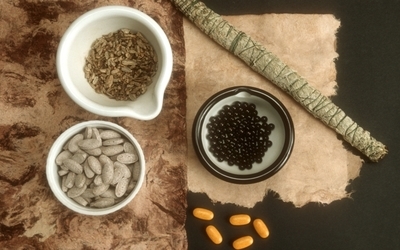Building an evidence base for herbal medicine
Data Analytics for traditional Chinese medicine research, a collection of works from the field’s top researchers, including academics from mainland China, addresses many of the issues surrounding traditional Chinese medicine and their use in a western clinical setting.
Eastern and western medicines have a lot to offer each other says the University of Sydney’s Dr Josiah Poon,editor of the book internationally published by Springer.
“As worldwide interest in integrative medicine – the blending of traditional Chinese medicine (TCM) and western medicine – increases so too do the calls for evidence of its legitimacy,” says Dr Poon.
Dr Poon who has been studying eastern medicines for more than two decades says TCM and information technologies are often viewed as polar opposites and eastern remedies tend to be seen as non-scientific.
But by using algorithms to analyse clinical records, he and his colleagues have been building the evidence-base needed to confirm their scientific merit.
“We have been revealing the hidden knowledge buried deep within the massive clinical and textual datasets found in hospitals and/or healthcare clinics’ records both here in Australia and China.
“This kind of research can help confirm TCM diagnostic-treatments as evidence-based, not just an ancient philosophy or subjective assessment,” states Dr Poon.
Co-editorDr Simon Poonsays ‘Data Analytics for traditional Chinese medicine research’ is a landmark work for researchers working in the field of integrative medicine.
“From the perspective of a researcher, we wanted to demonstrate how you can make use of machine learning, data mining, statistics and other analytic techniques to resolve research challenges,” says Dr Poon.
“We also wanted to show how if successfully applied these techniques can provide the insights on how to conduct future work on herbal or western medicines.”
While one book chapter reports on new approaches to studying interactions among herbs in Chinese herbal formulae, another addresses techniques for quality control of herb medicine.
“It describes how researchers can ‘fingerprint’ herbs, isolate and identify herb potency regardless of where in the world they are growing,” says Dr Poon.
“We know that herbs can vary from batch-to-batch or region-to-region and consistency of potency has been an issue for those who question the legitimacy of TCMs.
“Previous analysis techniques have not been as extensive as those presented in this work.”


Comments are closed.